Publisher: Amy Marson Creative Director: Gailen Runge Art Director/Cover Designer: Kristy Zacharias Editor: Liz Aneloski Technical Editors: Doreen Hazel and Alison M. Schmidt Book Designer: Katie McIntosh Production Coordinator: Zinnia Heinzmann Production Editor: Alice Mace Nakanishi Illustrator: Jessica Jenkins Photo Assistant: Mary Peyton Peppo Photography by Mary Mashuta and Diane Pedersen, unless otherwise noted Published by C&T Publishing, Inc., P.O. Box 1456, Lafayette, CA 94549 This book is dedicated to three women:Liz Aneloski, my editor, who is always calm and soothing; Rebecca Rohrkaste, who has been my assistant for many years;And Roberta Horton, my sister, who always has another right way of doing everything. When I became a quilter in the early 1970s, hardly any quilting books or magazines were available. Quilters today are very lucky because just the opposite is true, to say nothing of what is also available on the Internet. When I look at a new book, I wonder if there is going to be something new and whether I will be entertained. I have already written one book about machine quilting with a walking foot: Foolproof Machine Quilting.
When I became a quilter in the early 1970s, hardly any quilting books or magazines were available. Quilters today are very lucky because just the opposite is true, to say nothing of what is also available on the Internet. When I look at a new book, I wonder if there is going to be something new and whether I will be entertained. I have already written one book about machine quilting with a walking foot: Foolproof Machine Quilting.
Believe it or not, I have more to say. Who Is This Book For? I am writing for multiple audiences: Beginners who have never machine quilted Those who never got beyond stitching in-the-ditch and straight lines with a walking foot and dont know there is more that they can do Those who have tried free-motion quilting and been frustrated because it takes so long to master Those who enjoyed Foolproof Machine Quilting and are eager for more information and ideas As a professionally trained teacher, I also know that there are three kinds of readers: Those who read every word Those who are only interested in the pictures Those who look at the pictures, but if they find an interesting one will read the nearby text Hopefully I have included something for all of you. Be willing to try new things rather than just repeating old designs you have already conquered. Looking for Inspiration Lets begin with making sure you are looking for new quilting designs wherever you go. Many of you always have a camera phone with you, so there is no excuse for missing a good shot. I have included some pictures from my travels with my sister, Roberta Horton, who is also a quilter.
She is the official family photographer, but she does let me tell her when I want a picture. Any of these pictures could be the starting point for a new quilting design. I actually used the picture of hotel carpeting in Paris, France, as inspiration for one of the borders in Tropical Delight. Part of the secret is keeping your eyes constantly on alert for quilting ideaseverywhere, not just at quilt stores and quilt shows. By the way, the sidewalk painting (below) was photographed a few blocks from my house on a walk to my favorite restaurant.  The Adirondacks, New York
The Adirondacks, New York  New Years chalk sidewalk painting.
New Years chalk sidewalk painting.
Berkeley, California  The Adirondacks, New York
The Adirondacks, New York  The Adirondacks, New York
The Adirondacks, New York  The Adirondacks, New York
The Adirondacks, New York  Dublin, Ireland
Dublin, Ireland  Dublin, Ireland
Dublin, Ireland  Chester, Great Britain
Chester, Great Britain  The Royal Pavilion.
The Royal Pavilion.
Brighton, Great Britain  Hand-painted wall. Llanidloes, Wales
Hand-painted wall. Llanidloes, Wales  Bridge. Paris, France
Bridge. Paris, France  The Eiffel Tower. Paris, France
The Eiffel Tower. Paris, France  Giverny, France
Giverny, France  Hotel carpeting. Paris, France
Hotel carpeting. Paris, France  Wall decoration. comuse dAlsace, France
Wall decoration. comuse dAlsace, France  Wall decoration. comuse dAlsace, France
Wall decoration. comuse dAlsace, France 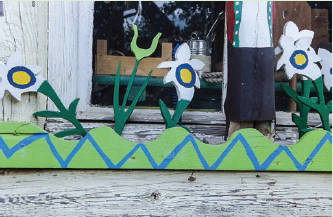 Folk art planter box. comuse dAlsace, France How to Use This Book I have come up with a lot of possible quilting design ideas. comuse dAlsace, France How to Use This Book I have come up with a lot of possible quilting design ideas.
Folk art planter box. comuse dAlsace, France How to Use This Book I have come up with a lot of possible quilting design ideas. comuse dAlsace, France How to Use This Book I have come up with a lot of possible quilting design ideas.
In , I will show you some great, easy ways to create quilting designs using paper folding and combining simple geometric shapes, then adapting them to stitch with a walking foot. In , I show you some simplified traditional sashiko hand-stitching designs that can also be adapted to walking-foot quilting. There are a lot to choose from. I have devised a simple grading system of clocks to give you an idea of how complex a design is and how long it takes to stitch. One clock is simple and fast, but five clocks will take a considerable amount of time to complete. 
 There are benefits and drawbacks to quilting with a domestic sewing machine and a walking foot.
There are benefits and drawbacks to quilting with a domestic sewing machine and a walking foot.
Benefits of Quilting with a Walking Foot The biggest benefit is that you can do it. All the stitching on the quilt is done on the right side, where you can easily see what youre doing. There are no pencil or chalk markings on your quilts after the quilting is finished because you make and stitch around removable templates made from self-adhesive shelf paper or freezer paper. 
Next page
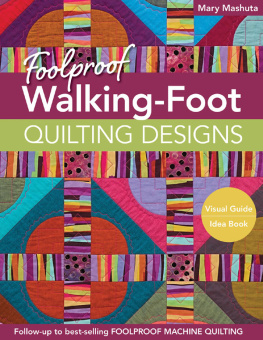
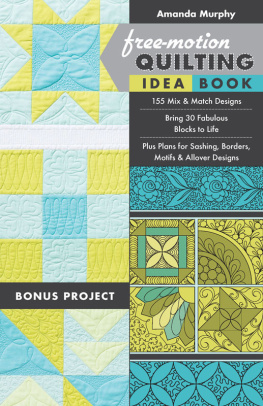
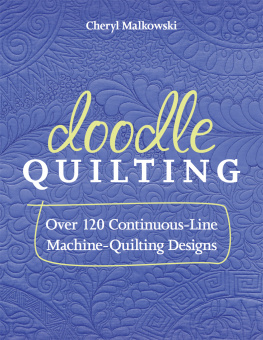

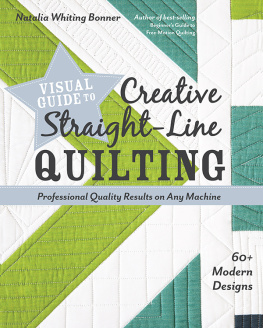
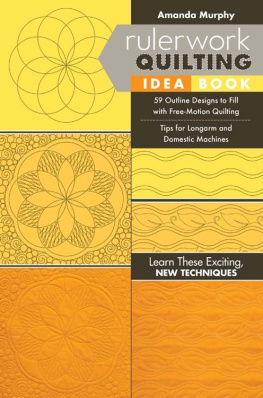
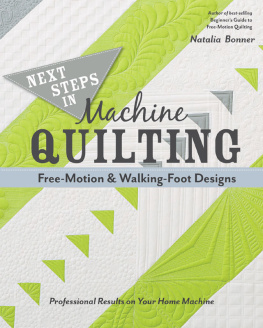
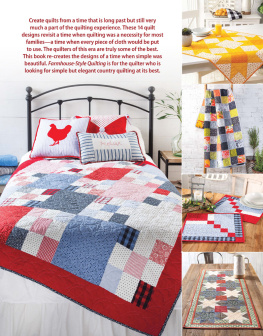
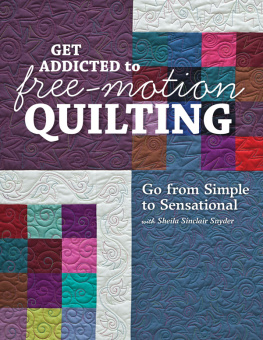
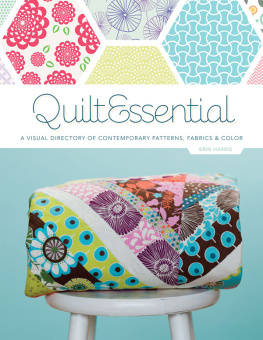
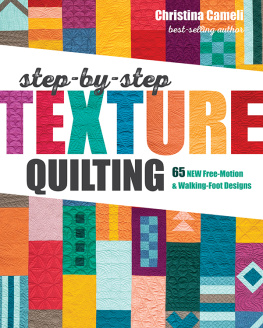


 When I became a quilter in the early 1970s, hardly any quilting books or magazines were available. Quilters today are very lucky because just the opposite is true, to say nothing of what is also available on the Internet. When I look at a new book, I wonder if there is going to be something new and whether I will be entertained. I have already written one book about machine quilting with a walking foot: Foolproof Machine Quilting.
When I became a quilter in the early 1970s, hardly any quilting books or magazines were available. Quilters today are very lucky because just the opposite is true, to say nothing of what is also available on the Internet. When I look at a new book, I wonder if there is going to be something new and whether I will be entertained. I have already written one book about machine quilting with a walking foot: Foolproof Machine Quilting. The Adirondacks, New York
The Adirondacks, New York  New Years chalk sidewalk painting.
New Years chalk sidewalk painting. The Adirondacks, New York
The Adirondacks, New York  The Adirondacks, New York
The Adirondacks, New York  The Adirondacks, New York
The Adirondacks, New York  Dublin, Ireland
Dublin, Ireland  Dublin, Ireland
Dublin, Ireland  Chester, Great Britain
Chester, Great Britain  The Royal Pavilion.
The Royal Pavilion. Hand-painted wall. Llanidloes, Wales
Hand-painted wall. Llanidloes, Wales  Bridge. Paris, France
Bridge. Paris, France  The Eiffel Tower. Paris, France
The Eiffel Tower. Paris, France  Giverny, France
Giverny, France  Hotel carpeting. Paris, France
Hotel carpeting. Paris, France  Wall decoration. comuse dAlsace, France
Wall decoration. comuse dAlsace, France  Wall decoration. comuse dAlsace, France
Wall decoration. comuse dAlsace, France  Folk art planter box. comuse dAlsace, France How to Use This Book I have come up with a lot of possible quilting design ideas. comuse dAlsace, France How to Use This Book I have come up with a lot of possible quilting design ideas.
Folk art planter box. comuse dAlsace, France How to Use This Book I have come up with a lot of possible quilting design ideas. comuse dAlsace, France How to Use This Book I have come up with a lot of possible quilting design ideas.
 There are benefits and drawbacks to quilting with a domestic sewing machine and a walking foot.
There are benefits and drawbacks to quilting with a domestic sewing machine and a walking foot.